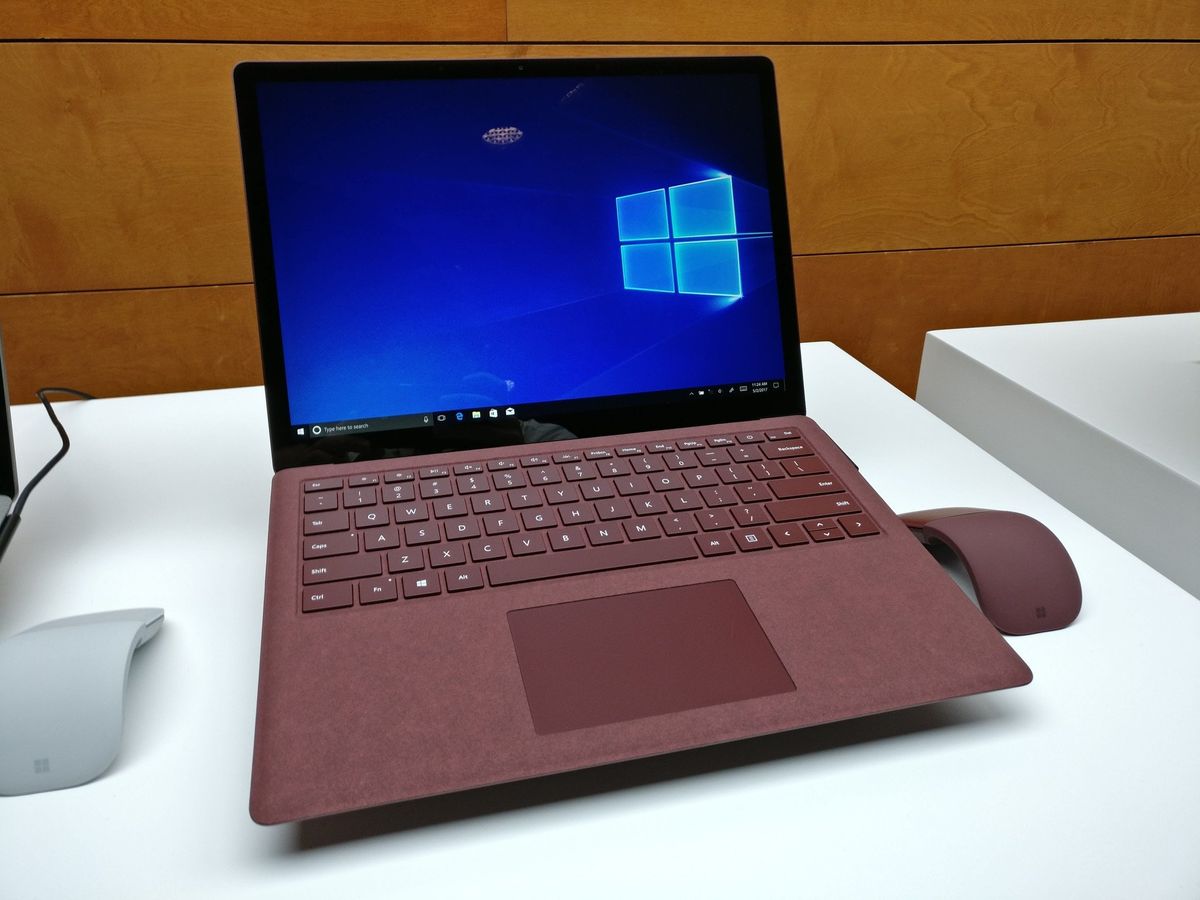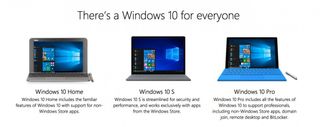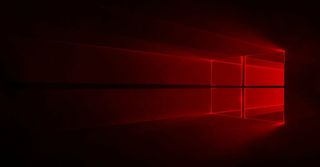Windows 10 S can succeed because 'normal' people aren't PC geeks — and that's OK
Taking the "pro" out of Windows is only bad if you don't hang around with normal PC users. Really. Keep reading if you're still not convinced.

One of the toughest things to balance on a site dedicated to Windows and its related products is how to target content. While professionals and enthusiasts tend to be the most articulate and knowledgeable, they can also be myopic, especially compared to "regular" consumers.
This is why I'm grateful that my close friends and family barely understand the things I know or care about professionally. Geeking out over innovative design languages, Windows 10 on ARM, and software "bridges" is not normal. I get that, and I hope you do too.
I bring this up because if you're reading this article, itching to comment, you're likely in the one-percent: a Windows enthusiast, aficionado, maybe even an expert. I regularly concede that many people in our audience have proficiencies where I lack serious credibility. That's what's so fun about this place — the sharing of knowledge and viewpoints.
This preamble is necessary because the world is mostly made up of people who are not Windows enthusiasts, experts, or even what I would describe as fans. They're just regular people who need to send an email, browse the web, play a game, or watch a movie.
In recent articles, we wrote about Windows 10 S and Surface Laptop there is a perceptible blowback from the "pros," which was expected. Why would anyone want this?, readers wrote. You can't even download Steam! they said.

These same people are aware that Apple has sold millions of pseudo-PCs in the form of iPads. With kludgy keyboard covers and iOS phone apps, I see people all the time on planes, media events, and cafes trying to make the iPad into something it's not: a PC replacement.
Now Microsoft comes on the scene with an x64 PC that can still run Win32 apps (and soon even iTunes from the Store) and suddenly people aren't ready for such a thing. Even though we live in a world where 80 percent of the smartphone market belongs to Android – arguably not the world's friendliest OS – Windows 10 S is suddenly too complicated or confusing. I don't get it.
Get the Windows Central Newsletter
All the latest news, reviews, and guides for Windows and Xbox diehards.
Windows 10 S has real challenges
None of this is to suggest that Microsoft is going to have an easy sell with Windows 10 S. In that regard, I agree with Windows Central writer Jason Ward's recent article spotlighting consumer education as an invaluable piece of Microsoft's potential success here.
Microsoft is already confronting this, but in typical marketing methods they are focusing on the positives for Surface Laptop, such as "streamlined for security" and "performance made personal." Don't expect Redmond's creation to be sold as "the gorgeous laptop that can't run McAfee Antivirus and WinX DVD Ripper!" (Oddly enough, for some of us this is a selling point ... )
That is the right approach, too. There are benefits to running an OS with no background tasks, or thousands of registry entries (Microsoft called out the fact that Visual Studio creates 750,000 registry entries as one egregious and ironic example).

The benefits of all-day battery life, lack of "PC rot," and consistent OS performance for the life of the device provide valuable marketing incentive.
The same reason that people love Windows — being able to install any app, no matter how bad or destructive — is the same reason why consumers gravitated towards Apple for years. Even those who stayed with Windows did so not out of devotion, but because they had to for work.
Microsoft does not want you to just deal with Windows; the company wants you to love it. That's a tall order but a noble one.
You can't critique the Windows 10 S and Surface Laptop gambit without offering an alternative to this ongoing problem that Microsoft faces. The old Win32 system is just that — old. It's not built for the Windows Mixed Reality and Fluent Design world we are rapidly moving towards. You can't get the cool, futuristic stuff tethered to yesteryear.
For those who can't find all their apps in the Windows Store – and at least for 2017 that will be many of you – the problem fixes itself with a free unlock to Windows 10 Pro. After all, Windows 10 S is essentially Windows 10 Pro with some hidden locks.
Customers won't have to return devices, seek online help, or bother relatives. Instead, they will click a button and go on with their life.
You're the solution
This all comes back to you.
Our regular Windows Central readers fall into two camps: those who see value in the Windows 10 S and the strict Universal-Windows-Platform (UWP) future, and those who want an old-school experience on new hardware. Both are legitimate positions.
If you need that one desktop app that is not in the Windows Store, there is no amount of haranguing about "future computing paradigms" that will change that fact. So, go "Pro" and don't look back. Let Microsoft prove that the Windows Store is good enough. That is its job, and we all expect the company to make it self-evident. It hasn't done that yet, so let's watch what happens and keep up the pressure. Getting Apple iTunes and Spotify in the Windows Store are great first steps, but there needs to be much more.
For others, do what you always do: spread knowledge. That is what tech enthusiasts excel at.

I see real value in a Windows-10-S future for consumers. To drill the point home, I plan to keep my Surface Laptop "S-only" not out of spite, but because that's how I use laptops these days.
Will Windows 10 S succeed? Not on day one, but it has to start somewhere. There will be pain points, but make no mistake about it: the old world of Win32 desktop applications, inadequate security, and bad battery life is on notice. Getting to that new world of siloed, secure, and efficient UWP apps is going to be a long process with speed bumps, but let's embrace that future and not live in the past.
Finally, I encourage all of you to talk to "regular" people. Ask them what OS version their phone or PC runs. Inquire if they know the benefits of ARM versus x86 processing. If they don't have answers or their eyes glaze over, they're normal. Talk to them, find out how they use their devices, what apps they use and their habits.
I suspect you'll learn a lot about how the world works, and it's not as complicated as you think.

Daniel Rubino is the Editor-in-chief of Windows Central. He is also the head reviewer, podcast co-host, and analyst. He has been covering Microsoft since 2007 when this site was called WMExperts (and later Windows Phone Central). His interests include Windows, laptops, next-gen computing, and wearable tech. He has reviewed laptops for over 10 years and is particularly fond of 2-in-1 convertibles, Arm64 processors, new form factors, and thin-and-light PCs. Before all this tech stuff, he worked on a Ph.D. in linguistics, performed polysomnographs in NYC, and was a motion-picture operator for 17 years.